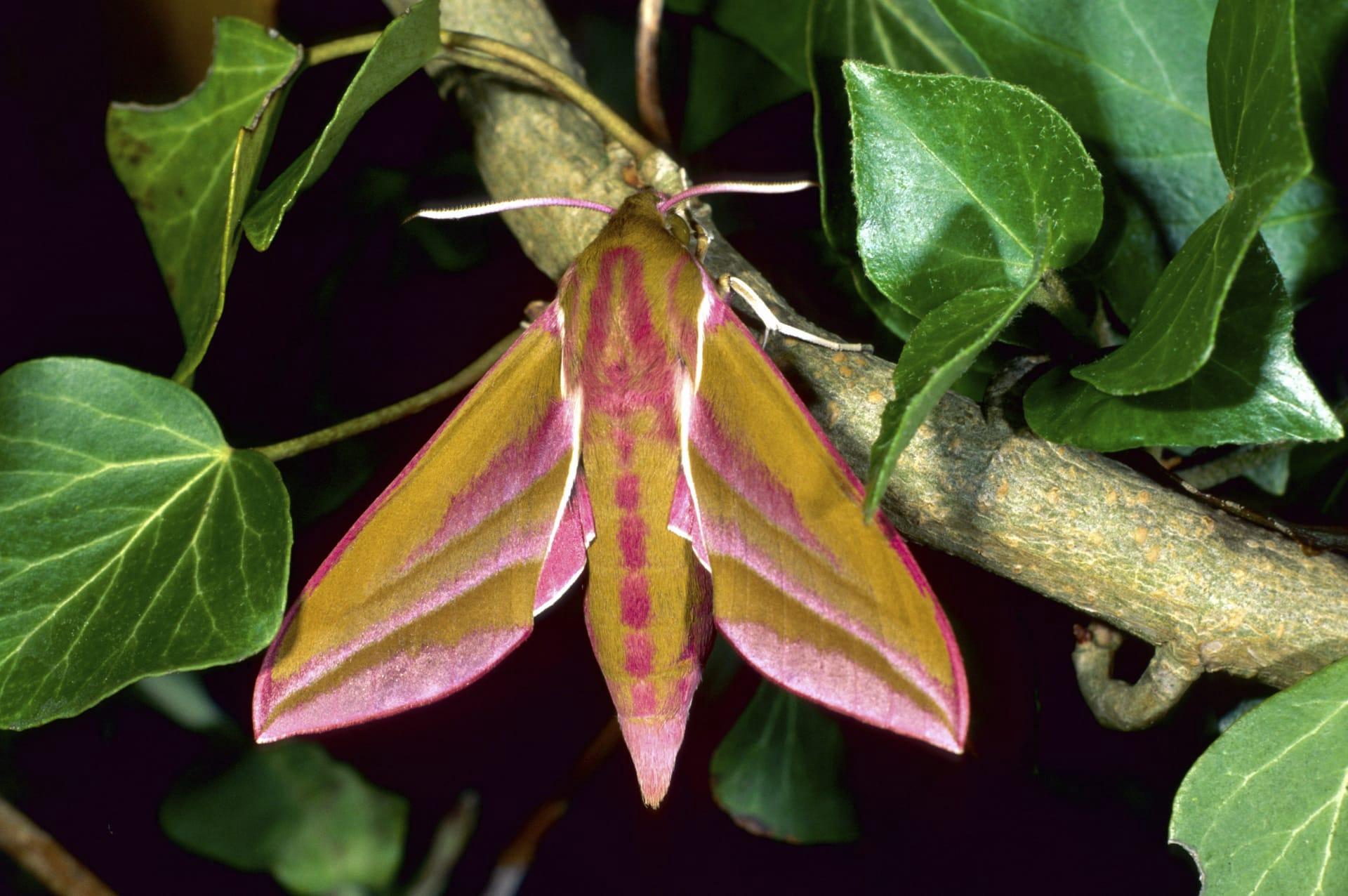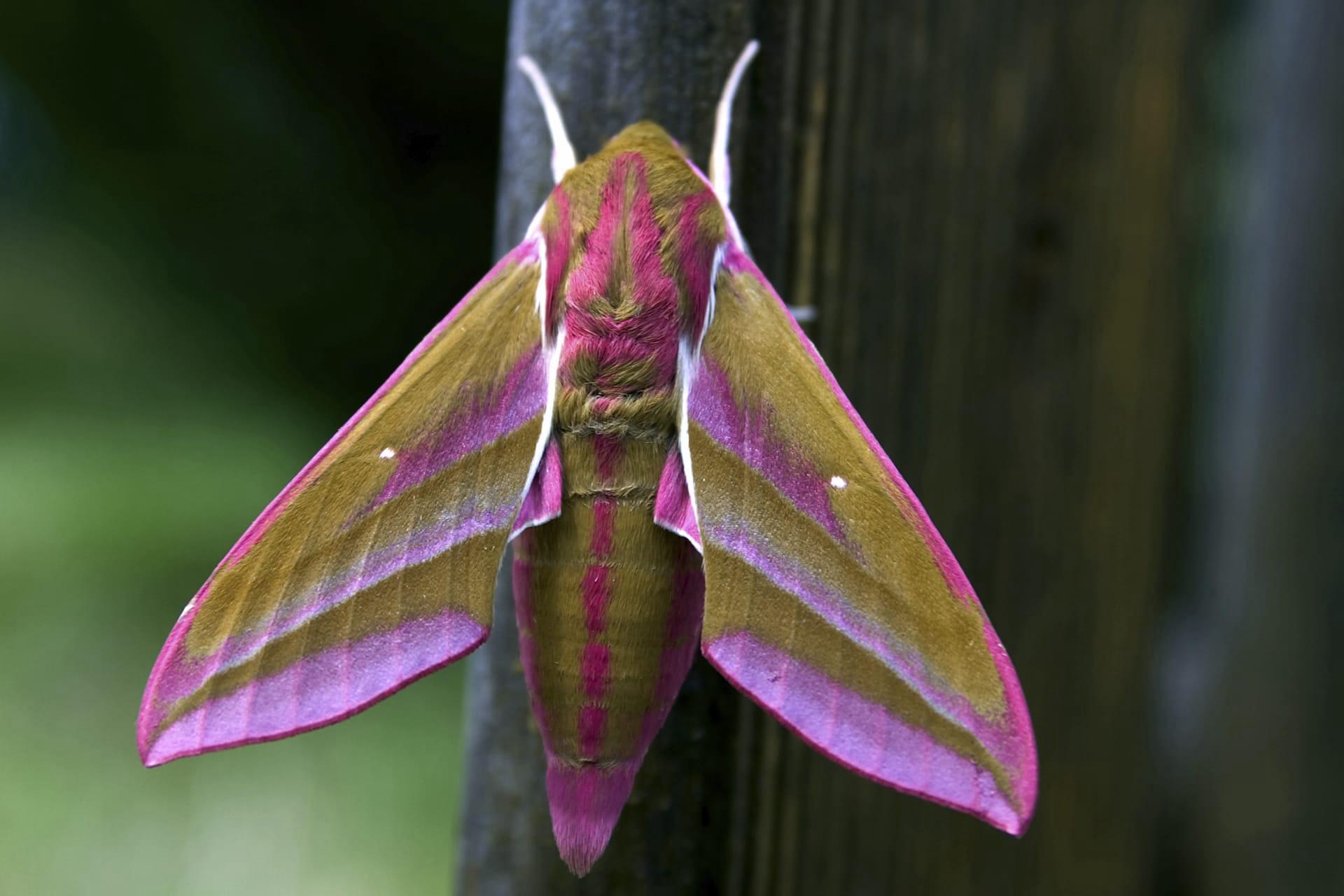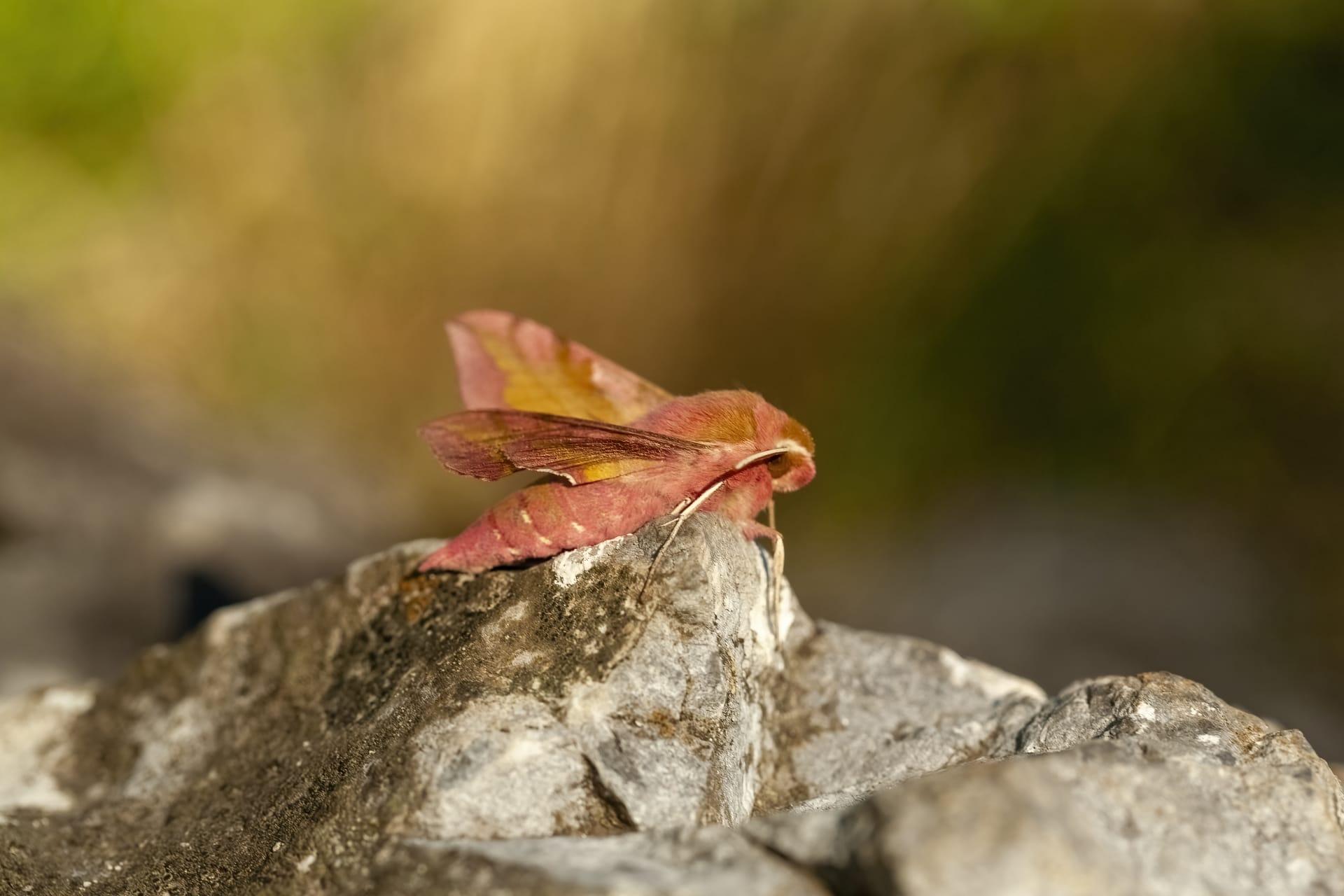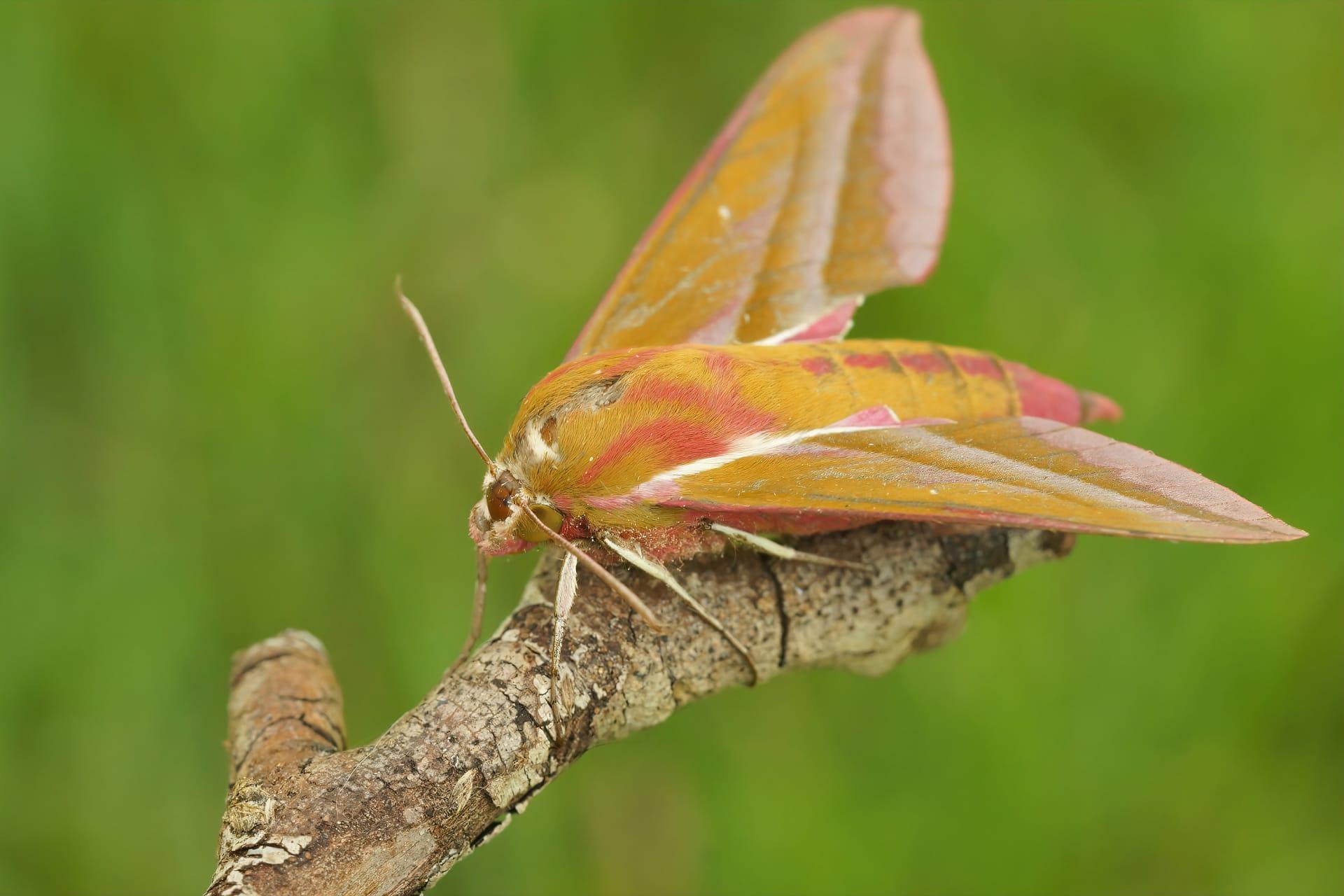Elephant Hawk Moth Characteristics
- Home /
- Mini Encyclopedia /
- Animal /
- Elephant Hawk Moth Characteristics
1
The Elephant Hawk Moth, a striking species known scientifically as Deilephila elpenor, boasts a fascinating physiology. Adult moths exhibit a wingspan ranging from 45 to 60 millimeters, with a vibrant color palette of pink and olive green. Their lifespan, primarily as moths, spans approximately a month. During this phase, they're mainly active at night, showcasing their unique ability to hover akin to hummingbirds.
One of the most distinctive organs of the Elephant Hawk Moth is its proboscis. This long, coiled structure, typically about 3 cm in length, serves as a nectar-sipping straw. It uncoils to access nectar from deep within flowers, a critical adaptation for feeding. This specialized organ allows them to feed while hovering, minimizing energy expenditure and reducing the risk of predation.

2
Question: Why are Elephant Hawk Moths named so?
Answer: The name "Elephant Hawk Moth" originates from the caterpillar stage of the species. The caterpillar has a unique trunk-like appendage at the front, resembling an elephant's trunk. Additionally, "Hawk" in their name reflects their swift and skilled flying ability, similar to that of a hawk. These moths are known for their agility in the air, able to make sharp turns and hover with precision.

3
Elephant Hawk Moths are remarkable for their flying capabilities. They possess powerful wing muscles, enabling them to fly up to speeds of 12 kilometers per hour. Their wingbeats are incredibly rapid, contributing to their ability to hover with precision. This agility aids them in evading predators and efficiently foraging for nectar at night.
When it comes to feeding, these moths are exclusively nectarivorous. They exhibit a preference for tubular flowers, utilizing their long proboscis to reach nectar. This feeding habit occurs mostly at dusk and dawn. Their acute sense of smell guides them to flowers, and their hovering skill allows them to feed without landing, which is vital for conserving energy and avoiding predators.

4
The Elephant Hawk Moth thrives in a variety of habitats, including gardens, woodlands, and grasslands. They are commonly found across the British Isles, Europe, and parts of Asia. These moths prefer temperate climates with abundant flowering plants, crucial for their nectar-based diet.
Reproduction in Elephant Hawk Moths involves a fascinating process. Females lay eggs on suitable host plants, particularly on Willowherb and Bedstraw. Upon hatching, the caterpillars feed voraciously on these plants. After several molts, they pupate, transforming into moths. This metamorphosis is a critical phase in their life cycle, enabling them to transition from ground-dwelling caterpillars to agile, airborne adults.

5
Book: "Moths of the British Isles" by Bernard Skinner. Published in the United Kingdom, this comprehensive guide, dating back to the early 1980s, offers an in-depth look at various moth species, including the Elephant Hawk Moth. Skinner provides detailed descriptions, lifecycle information, and illustrations, making it a valuable resource for enthusiasts and researchers alike.
Book: "Field Guide to the Moths of Great Britain and Ireland" by Paul Waring and Martin Townsend. This book, published in the 2000s in the UK, is a thorough field guide covering a wide range of moth species. The section on the Elephant Hawk Moth includes detailed descriptions, habitat information, and photographs, aiding in identification and understanding of this fascinating species.